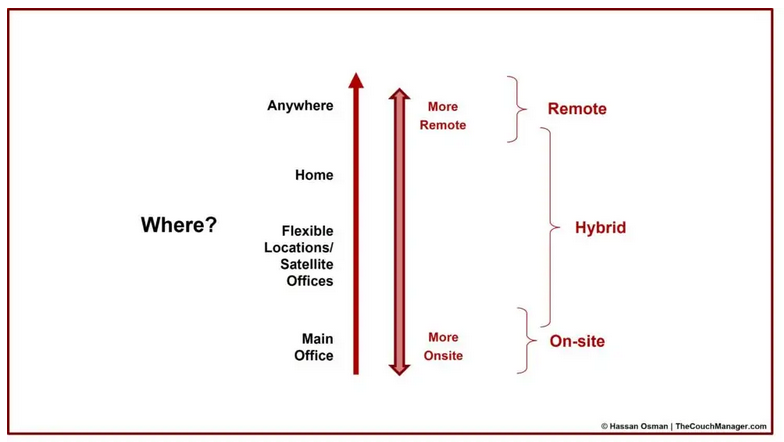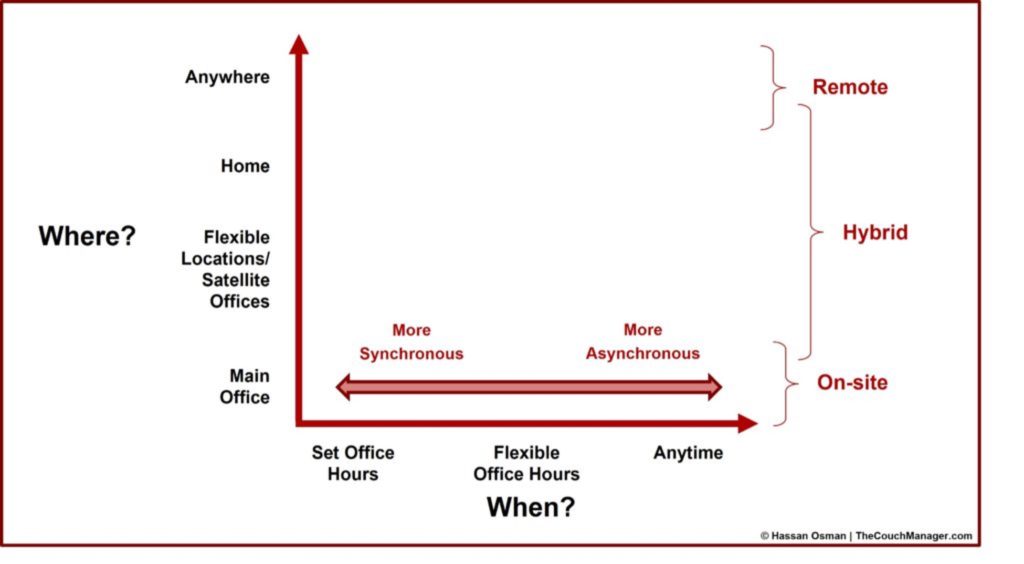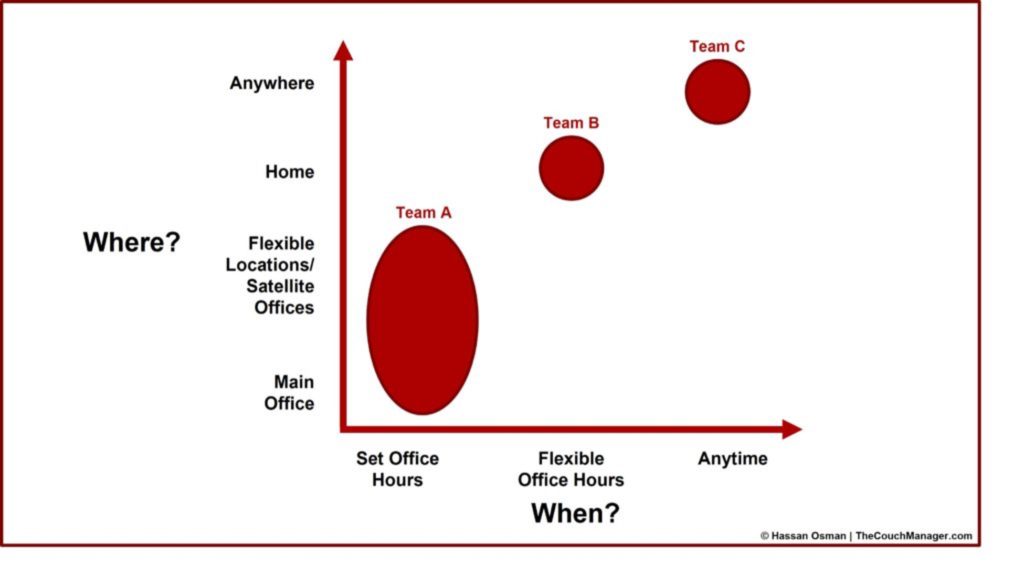What is A Hybrid Work Model? A Simple Explanation for Hybrid Leaders
By Hassan Osman, PMO Director & Author | Cisco Systems
February 4, 2022
Every organization is now considering moving to a hybrid work model for their workforce. But what exactly does a hybrid work model mean and how is it different from a standard work or virtual arrangement?
Here is a simple explanation.
The Hybrid Work Model
The best way to explain what a hybrid work model means is to describe it visually. Here’s an illustration that shows a spectrum of where work gets done by employees.

Work can be accomplished from the main office (i.e., your organization’s primary on-site location), from flexible locations (such as shared workspaces or co-working spaces), from satellite offices (which are organization-owned offices that are usually smaller in size than the main office), from home, or from anywhere in the world.
The higher you are on the spectrum, the “more remote” you are, and the lower you are on the spectrum, the “more on-site” you are.
There are no hard lines between these locations, but if you think about it, being entirely on-site means working at the main office, and being entirely remote means working from anywhere. And hybrid work sits somewhere in the middle, overlapping with multiple locations and including a combination of work conducted on-site and work conducted remotely.
This view, however, doesn’t offer the complete picture; there’s another dimension we need to consider when discussing hybrid work. And that’s the dimension of time.
In other words, we should also look at the spectrum of when work gets done.
Here’s another illustration that shows both dimensions of when and where work can be accomplished.

Work can be accomplished during set office hours (e.g., between 8 a.m. and 5 p.m.), flexible office hours, or anytime office hours.
The closer you are to the set office hours range on the spectrum, the “more synchronous” the work is. Synchronous work means that your team members need to communicate and collaborate closely in real-time to get their work done.
On the other end, the closer you are to the anytime office hours range on the spectrum, the “more asynchronous” the work is. Asynchronous work means that your team members can accomplish their work at any time, and information doesn’t need to be exchanged in real-time.
An Example
As you look at the two dimensions of where and when work gets done on the hybrid work model chart, you’ll see the zones of the different types of arrangements: the bottom zone is mainly on-site, the top zone is mainly remote, and hybrid is somewhere in the middle.
You can then start plotting where different teams or individuals fall on the chart. Here’s an illustration that shows an example of three different teams: Team A, Team B, and Team C.

Team A would work set office hours from either the main office or flexible shared spaces because their work requires synchronous and face-to-face communication.
Team B might be a bit more flexible in terms of their work hours and can work mainly from home because they don’t need to be co-located and they don’t have to always be synchronous in their communication.
And Team C, which focuses on design, might be able to work anywhere in the world and at any time because their work is project- and deadline-based and is highly asynchronous.
So keep in mind that different teams and individuals can have different experiences and arrangements, with some employees being more on-site and others being more remote.
And you can leverage this hybrid work model chart as a framework to help you think along those two dimensions.
This is an excerpt from my latest book: Hybrid Work Management: How to Manage a Hybrid Team in the New Workplace
This article was first published on The Couch Manager.
To learn more about Hybrid Work, watch Hassan’s session on “Hybrid Work Management: A four-part framework for building and leading a hybrid team in the workplace” at IIL’s Leadership and Innovation Online Conference, which opens on March 3. See full details and register with code “OSMAN” for $10 OFF.
Hassan Osman is a Program Management Office (PMO) Director at Cisco Systems* where he leads global virtual teams on delivering large and complex programs.
He is the author of several Amazon Bestselling books, including “Hybrid Work Management,” “Influencing Virtual Teams,” and “Don’t Reply All.”
Before joining Cisco, Hassan was a manager at EY, where he analyzed failing programs at Fortune 100 companies and recommended strategic plans to fix them.
He is a certified PMP, CSM, and ITIL, and blogs about managing remote teams on www.thecouchmanager.com



